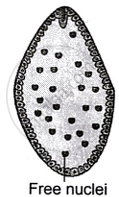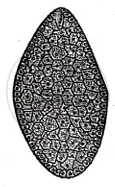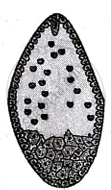Advertisements
Advertisements
प्रश्न
Angiosperms bearing unisexual flowers are said to be either monoecious or dioecious. Explain with the help of one example each.
उत्तर
Flowers that possess either stamens (male) or carpels (female) are called unisexual flowers. The plants possessing both male and female flowers in the same plant are are called monoecious and when male and female flowers are present on different plants, they are known as dioecious.
Example of monoecious plants: Cucurbits and coconut
Example of dioecious plants: Papaya and date palm
APPEARS IN
संबंधित प्रश्न
Describe the development of endosperm after double fertilisation in an angiosperm.
Identify the ploidy of embryo and endosperm respectively formed after following cross.
An angiospermic male plant with 24 chromosomes in its pollen mother cells is crossed with female plant bearing 24 chromosomes in its root cells.
Identify the characteristic feature/s of helobial endosperm.
In dicots, the pollen grains are usually ______
In angiosperms, triple fusion is required for the formation of ______.
The endosperm of gymnosperms is ______.
Coconut water contains:
Why does the zygote begin to divide only after the division of Primary endosperm cell (PEC)?
The diagram given below shows the three types of endosperms in angiosperms.
 |
 |
 |
| Type 1 | Type 2 | Type 3 |
- Identify the three types of endosperms shown above.
- Name the type of endosperm which commonly occurs in polypetalous dicots.
The number of chromosomes in the leaf cells of a male plant is 40 and in the stem cells of a female plant is 60. If they are artificially hybridised, what will be the number of chromosomes in the endosperm?
